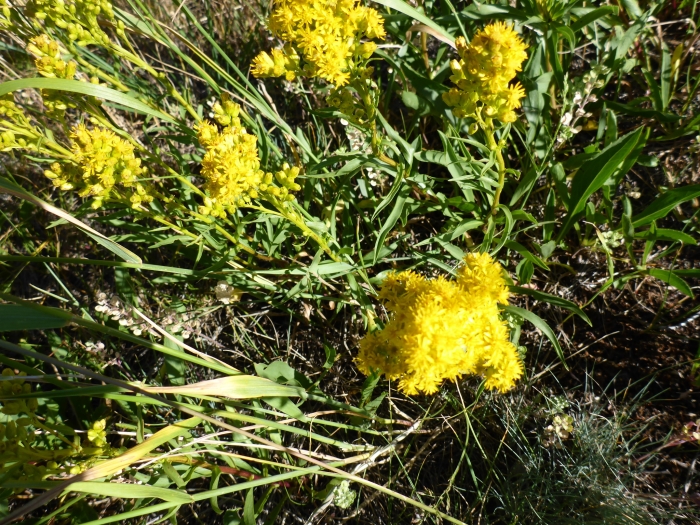Missouri Goldenrod
(Solidago missouriensis)
Missouri Goldenrod (Solidago missouriensis)
/
/

mfeaver
CC BY 4.0





















Estimated Native Range
Summary
Missouri Goldenrod is valued for its drought tolerance and ability to thrive in poor soils, making it a suitable choice for naturalistic plantings and wildflower gardens. It is also used in restoration projects to stabilize soils and support local ecosystems. In cultivation, it prefers full sun exposure and tolerates a range of soil types, provided they have good drainage. While generally low-maintenance, it can be susceptible to rust and other fungal diseases. Gardeners should be aware that Solidago species can spread aggressively via rhizomes, potentially becoming invasive in some settings.CC BY-SA 4.0
Plant Description
- Plant Type: Herb
- Height: 1.5-3 feet
- Width: 0.5-1 feet
- Growth Rate: Moderate
- Flower Color: Yellow
- Flowering Season: Summer
- Leaf Retention: Deciduous
Growth Requirements
- Sun: Full Sun
- Water: Low
- Drainage: Fast, Medium
Common Uses
Bee Garden, Bird Garden, Border Plant, Butterfly Garden, Deer Resistant, Drought Tolerant, Edible*Disclaimer: Easyscape's listed plant edibility is for informational use. Always verify the safety and proper identification of any plant before consumption., Fire Resistant, Hummingbird Garden, Low Maintenance, Rabbit Resistant, Showy Flowers, Street Planting
Natural Habitat
Prairies, grasslands, and open woodlands
Other Names
Common Names: Prairie Goldenrod, Low Goldenrod, Missouri-Goldrute, Verge D’Or Du Missouri
Scientific Names: , Solidago missouriensis, Solidago missouriensis var. fasciculata, Solidago missouriensis var. missouriensis, Solidago glaberrima, Solidago missouriensis var. extraria, Solidago missouriensis var. tenuissima, Solidago concinna, Solidago marshallii, Solidago hapemaniana
GBIF Accepted Name: Solidago missouriensis Nutt.